Photo

Tidepooling [Clampearl Cove Trail One] by k-times-two
1 note
·
View note
Photo

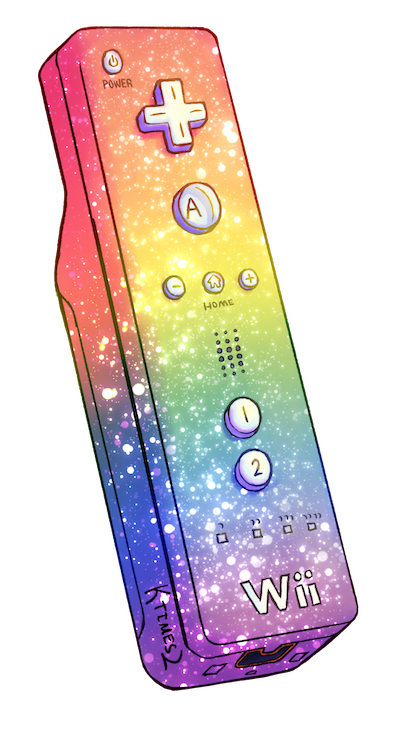

Rainbow Wiimote!
35 notes
·
View notes
Photo
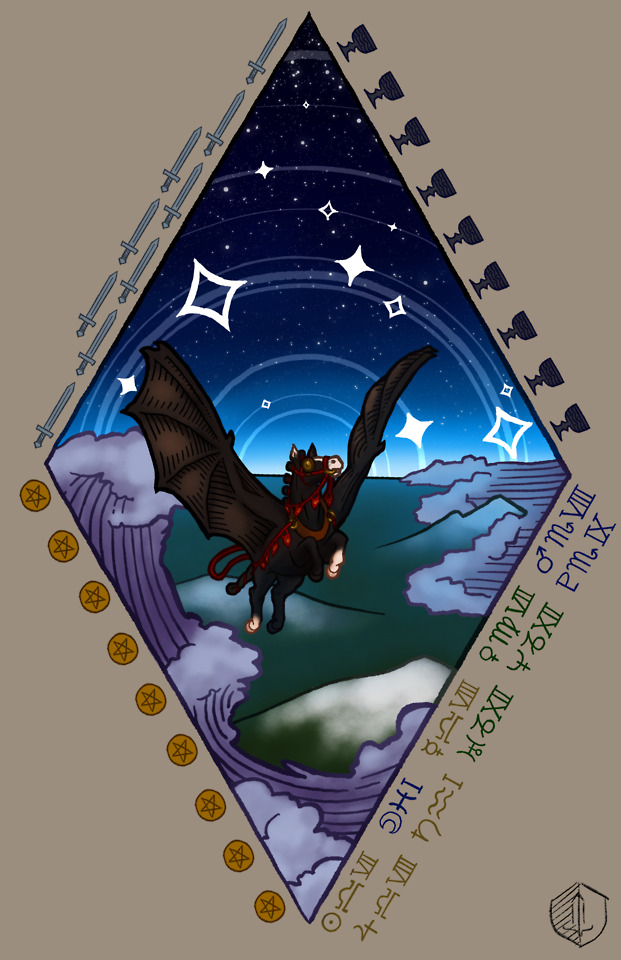
This is a personalized birthday horoscope illustration! I had a ton of fun making this gift for a friend -- natal chart reading can be really eerily accurate, haha!
I’d love to take these as commissions! $110 USD for color, $80 USD for lines only. See my commissions page for details, or e-mail me at k.times.two.works (at) gmail.com!
10 notes
·
View notes
Photo
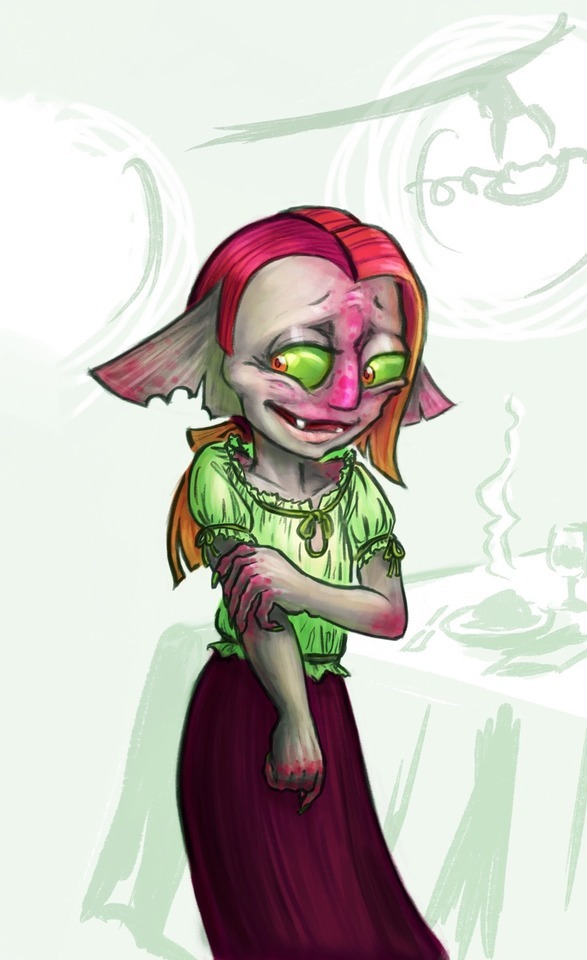


Jen is an outgoing, hardworking tomboy who really wants to contribute. She works as a mechanic, and hopes to one day be a Steel Eel driver. 🐟💦✨
77 notes
·
View notes
Photo

Animal Crossing bell bag purse and cosplay! I made the purse a while back, but only recently got pics. 🍃✨
9 notes
·
View notes
Note
Not sure if you’re still paying attention, Anon, but for general posterity: I’ve been using these and they’re working pretty great! I wouldn’t stab ‘em with a a knife, but they hold up to me angrily mashing the controls while fighting the final secret boss in the Octo Expansion for hours on end. 🙃
What type of paint do you use on your joycons?
I’ve only done this once, and I haven’t stress tested these yet, Anon! It may not hold up.
But I researched around, and chose Angelus paint: with adhesion promoter, sanding, Angelus 2hard, and I will be using their matte finish. I’ll be finishing this up and testing it out in the next week or so. Used their metallic and normal paint varieties; took me 8 different colors all told.
#conversation#anonymous#text#ask#housekeeping#i'm BAD at that boss fight but MAN do i want the golden toothpick
2 notes
·
View notes
Note
What type of paint do you use on your joycons?
I’ve only done this once, and I haven’t stress tested these yet, Anon! It may not hold up. But I researched around, and chose Angelus paint: with adhesion promoter, sanding, Angelus 2hard, and I will be using their matte finish. I’ll be finishing this up and testing it out in the next week or so. Used their metallic and normal paint varieties; took me 8 different colors all told.
2 notes
·
View notes
Photo
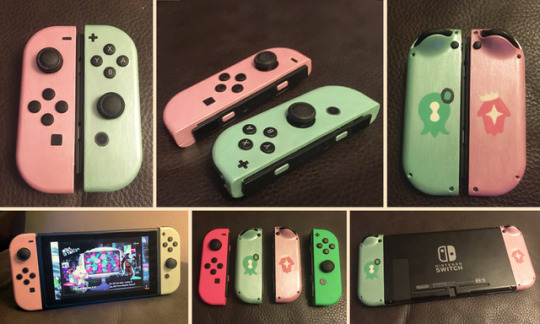

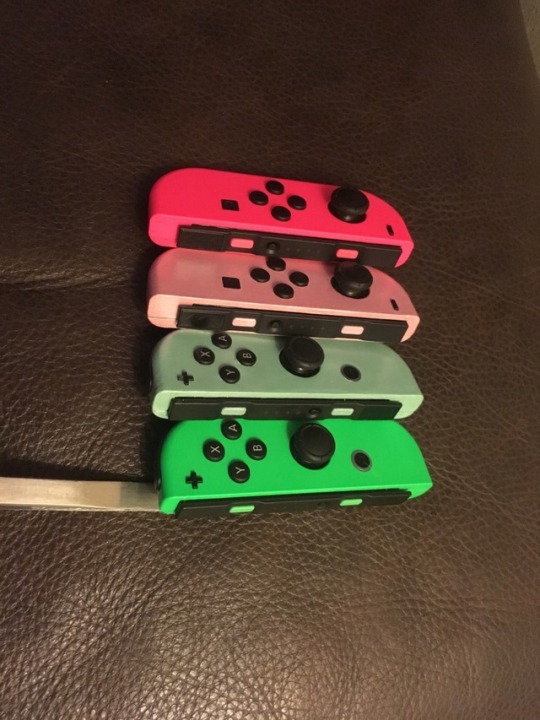
Off the Hook - Octo Expansion Custom Joycons!
Thanks to yesterday’s SURPRISE ANNOUNCEMENT that Octo Expansion was coming tomorrow, I spent all night rushing to get these pictures.
These are based off of Pearl and Marina’s Octo Expansion outfits! They’re not entirely finished, and I plan on adding matching joycon straps.
Love me them squid kids. 🦑🐙
I take commissions! Contact me for a quote!
#octo expansion#splatoon 2#pearl#marina#nintendo switch#custom joycon#joycon#joycon mod#joycon switch#custom controllers#custom controller#controller mod#gamer art#nintendo#nintendo community#nintendo fan#switch#videogame#videogames#custom switch#splatoon#inkling#octoling#off the hook#woomy#custom#customization#craft
71 notes
·
View notes
Text
Art, Skill, & Critique: Ways to be kind to yourself while improving your craft
Recently I was asked by a dear friend if I would be willing to write an article for a project of hers-- herart.club, a care project for artists. Having been an artist caring for myself for quite a while now, I thought I’d give the topic a try. You can read it over at https://www.herart.club/blog/art-skill-and-critique -- go sign up for the email list! Or, you can read it under the cut if you’d like.
One of the earliest things many struggle with making art is… well, not being good at art! There’s a vision in your head that you just can’t bring to life the way you want. Plus, it’s discouraging to see others make something in ten minutes that you couldn’t make in ten hours. I’ve been creating art for the better part of two decades now, and I still sometimes feel so overwhelmed by all the skills I don’t have.
Thankfully, along the way, I’ve also learned some things that help me manage those feelings. I hope by sharing them, they can help you as well.
First, I want to talk a little about social comparison theory. In a nutshell, the theory is that we want to figure out where we’re at, and we can do that better by looking at the folks around us. This can definitely be useful-- how would we grow, if we had no idea what we could strive for? But it can also be a source of doubt. We see all the amazing things that other people do, and wonder if we’ll ever be able to do as well. In the realm of art, it’s easy to fall into the trap of the frog pond effect. Much of the artwork we look at, on the internet or in galleries, is work created by folks who’ve spent years honing their craft. In comparison, your early artist’s attempts leave you dissatisfied.
What you don’t see is all the failed attempts. For every masterpiece, there are hundreds of sketches and doodles and scrapped plans. A good way I’ve heard it put is that modern media allows us to see “the highlight reel” of other folks’ lives. Very few people want to publicize their failures. Even if they did, it wouldn’t necessarily gain as much of an audience. Many of my mistakes and half-thought-out ideas are boring and tedious. I imagine some people might be interested in the imperfections, but the majority of my audience is more interested in the things I do well.
Moreover, in creating things, it’s often not the case that people are directly comparing different pieces of art. I find it helpful to think of the Two Cakes comic by Stuffman.

[A two-panel comic.
First panel, titled “The Artist”: A dissatisfied person brings a cake to a potluck, and is placing it next to a larger and more intricate cake. “Aw man, that guy’s cake is way better than mine,” they say.
Second panel, titled “The Audience”: An excited person with a fork and knife, looking at the cakes from before. “Holy shit! Two cakes!”]
Folks are just excited to see more awesome stuff out in the world. Your art isn’t diminished by Michelangelo’s body of work, and vice versa. They exist together as unique creations. I find that this attitude allows me to better strive for cool things, and it allows me to easier appreciate all levels of craft in the artistry around me. Art is difficult! It’s awesome when people work hard to put something out there.
While it can be hard to consider your artistic growth in isolation, it’s an important perspective to have. But even then, there can be difficulties. Sometimes it just feels like nothing in your skill is changing, even though you’ve been practicing and working a lot. And other times, you’re just astounded that you made something that cool! What gives? Why does it always seem to be one or the other? Well, it can be related to the art cycle.

[An image that describes the art cycle. Skill at evaluating art grows overall at the same time skill is growing, but they grow in different phases.
When your skill at creating is better than your skill at evaluating, you can make better things than your ability to self-evaluate those things, so your art seems amazing.
When your skill at evaluating is better than your skill at creating, your art seems stale and terrible, even though you’re still growing better at art.]
These phases kick-start one another: as you grow better at art, you become accustomed to that level of skill, and become better at criticizing it. As your criticism grows, you become aware of areas you can improve your art. What’s interesting to note is that these are separate skills, to some degree: you can have a great sense for art and still not know how to make it. Though it is more difficult to do great art without knowing why it’s great. But evaluating art is a skill: and like any skill, it can be trained.
Part of growing better at art, of course, is feedback. It’s hard to improve in a vacuum. What we generally think of as “art criticism” actually falls into three main categories, though. It’s helpful to be able to recognize each as it comes up, because I find the best reactions to each strain are very different.
First, there is the feedback that amounts to “I hate what you made and you suck”. This can take a variety of forms, from long-written screeds to dogpiles of individual insults from many people. These statements can use concepts that you care about and turn it against you-- this type of feedback requires very little thought and effort to create and send to artists. But if you can’t recognize it, it can really mess with your head. The most effective response to this kind of criticism is to ignore it (block the commenters, delete the comments on your page, report commenters if need be, stop talking to the person who said this to you, and so on). If they hate it, so what? They’re not trying to help you get better. The only intent of the statement is to make you feel worse. Comments like “Cuck!” or “Racist!” used accusingly, and without other context? They exist only to attempt to force you to pick a side. Maybe you want to pick a side, and that’s normal. But know that you don’t have to. And you especially don’t have to at the behest of people that want to make your life miserable. You have the right to explore those issues in a more nuanced way, and the right to ignore the issues altogether if you want. (Another equally effective way to respond to this type of criticism is to respond humorously or absurdly, though not everyone has the energy or temperament for that.)
The second kind of feedback is the vaguely helpful kind. “I like it!” “That’s cool!” “I don’t know why, but the hand looks funky.” “That makes me feel uncomfortable.” Even if the context is kind, an overabundance of this kind of feedback can be frustrating. Sure, what you made is nice-- you yourself liked it enough to show it to other people-- but… what else? Why is it nice? Why do people like it? Why does the hand look funky? If you don’t know the answers to those questions, it’s harder to replicate what you did right, and hard to fix what went wrong. Take heart, though: this kind of comment is really valuable in aggregate. Most folks aren’t great at figuring out the reasons behind the impressions they get when evaluating art. (As we discussed earlier, it’s a skill that takes a lot of effort to develop!) But either way, people as a whole are very good judges of what feels right. You may not be able to say what you like (or dislike) about the Harry Potter books, but a lot of people enjoy them. Folks can’t generally say what looks wrong about hands that look weird. But they know what hands are supposed to look like, and they know that weird-looking hands aren’t right. Sometimes you can ask questions to try and tease out what someone means, if they’re willing to engage further with you. But sometimes you can’t. These comments act kind of like a common thermometer. They’re not the most accurate, but they give you an idea if you’re headed in direction you want to go. I like to thank folks for these comments if I can.
The third kind of comment is the specific, well-articulated, detailed explanation. This is the comment that lays bare exactly what the commenter liked, what they didn’t like, why, and usually also how they would’ve changed it to suit their tastes more. These are often the most emotional kind of comments to receive: pointing out things that you didn’t even know were lovable and were insecure about, pointing out things that you tried hard on and still didn’t get right, and even sometimes both. If you can, please thank these commenters. They spent time and energy they could’ve been doing something else to try and help you. (A typical one of these comments I give usually takes me a minimum of around an hour. Thirty minutes, maybe, for a small one.) What’s important to remember about these comments, though, is that no matter how well presented, they are still opinions. Maybe you were trying to make a weird hand! Maybe you like how it’s slightly unsettling. Typically, these sorts of comments will be more mixed in their praise or criticism, pointing out both strong and weak aspects of a work. Some assumptions are usually made here: the commenter may be trying to figure out what you were trying to say, at the same time that they are trying to see how the message could be stronger. And if what they point out doesn’t apply to your original goal, you don’t have to use their advice; though it may be useful to think about why the commenter made those assumptions in the first place. When I receive these comments, I usually take it as an opportunity to profusely thank the commenter and ask a little deeper about any questions I may have about their comment.
As your skills grow, so too will your ability to articulate what you like and dislike about other people’s art. Like any skill, this can be used in a variety of ways. Personally, growing up, I found that I had a hard time not speaking what I thought about art around me at any given moment. I ended up hurting folks a lot more than I intended to. As a result, a lot of my growth as an artist was accompanied by personal growth in how I relate to other people.
Art can be made for many different purposes and reasons. People who make art have a varying amount of ability to deal with criticism. As a result, I’ve found the kindest way to encourage artists is to comment about what I like about their art. Many small artists, especially online, have very little engagement with their work. And when you’re starting out, that can seem especially discouraging. If I can, I try to point out specific details that I enjoy about a piece. Even if it’s only a sentence or two, it can mean a world of difference.
The other personal policy I’ve adopted is to try and refrain from criticism unless it has been specifically asked for. Sure, I could point out every technical error I see straight off the bat, but who does that benefit? The artist, now discouraged? Me, having spent my precious time on something that probably won’t be listened to? An outside observer, who just learned that the world is a little harsher place? I don’t think any of those things make anyone’s life better, so I hold my criticisms until asked for, unless they affect me directly. (I feel perfectly fine criticizing an art project which involves physically hurting me without my permission, for example.)
But when feedback is asked for, I try to be very intentional about the comments I make. When I point out something weak in a piece, it is because I want the artist to be able to improve-- so I offer suggestions as to what could make it better next time they try. When I say something that might be discouraging, I sandwich it between awesome things I think about the piece-- to soften the potential blow and demonstrate my goodwill. I begin and end on positive notes. I talk about specifics, using concrete details from the work to support my points.
I talk about what I assume and how that influences my reading of the piece, and how that may not be what the artist intended. It’s funny when you think about it, but realism and impact are often at direct odds. This is what separates a good candid photographer from the pack: they’re aware of how to frame things to bring out the best of the subjects… while the rest of us are looking at ourselves tagged in our friend’s photos posted on Facebook, and wondering if we look like that all the time. (We don’t. Photos can often be unintentionally unflattering, just like some animated frames look bizarre out of context, but wonderful in sequence.) So it’s often useful for the artist if I lay out my assumptions, and when I suggest improvements, I also say what those improvements would potentially do.
I did not write this article with the intention of helping anyone become a better artist, though I would be very happy if that happened. Rather, I wrote it with a focus on the ways we can think and feel about our own skills, and how we interact with others in the context of those skills. I may have learned these lessons thanks to my experience with artist cultures online, but I use them every day. I want to help myself and others do better if we want to do better. I want to add goodness to the world. I want others to feel safe and supported as they try to add goodness to the world. I want to know when I do things wrong, I want to know when I harm other people-- because I don’t want to do that in the future, and I can’t stop if I don’t know. No one deserves to be hurt. Everyone deserves the best this world has to offer. And I want to do everything I can to get us there. It’s hard and difficult-- partially because growing is difficult just in general, and partially because many people have needs that directly compete. But that isn’t a reason for me to stop trying.
So I hope you can use something you’ve read here to make your life a little easier, a little better, a little bit more good. I hope that this helps you add goodness to other people’s lives as well. If it does that even a little bit, then I’ve succeeded doing what I set out to do.
#art#self care#self compassion#critique#philosophy#text#dash stretch#normally I don't post text over here but ya know what?#i like this#and it's art related#and i made it
8 notes
·
View notes
Photo

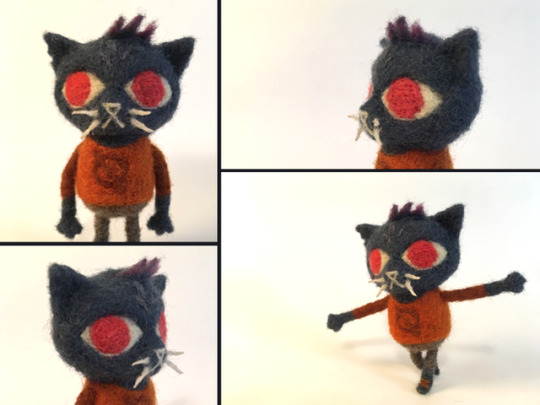
Mae from Night In The Woods! She’s a total trash mammal and so am I.
deviantArt - reddit - twitter - commissions
37 notes
·
View notes
Photo

Tulia! A bday gift for @cryptocache. Coporate drone turned space pirate!
3 notes
·
View notes
Photo

a #sketch of part of the #campground we're at. a #littlefreelibrary in the back, some nice trees... #art #nature
5 notes
·
View notes
Photo
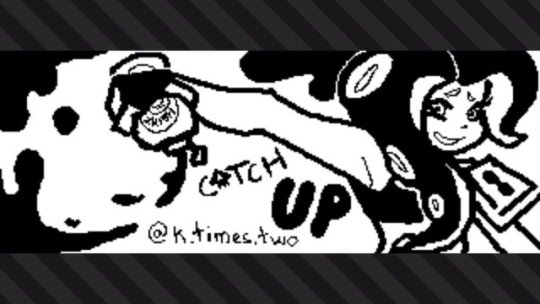
Splatoon 2! #TeamKetchup! Marina’s my faaaave. Catch up to my level!
36 notes
·
View notes
Photo

my hands are tied - toying with the idea of an additional ‘sona.
3 notes
·
View notes
Photo


A personal project! Hopefully i’ll turn these into patches before I go back to university. I already know how to entice potential geeky friends, but I have yet to figure out how to signal to LGBT folks. I’m hoping this will help, haaah.
Many icons come from thenounproject.com, but I’ve made a few of my own. Sources: (book) (controller) (dramatic masks) (drawing tools) (keyboard) (mouse, with slight adaptation for size/readability)
3 notes
·
View notes
Photo

a #ponysona #commission ! i enjoy #mlpfim quite a bit, so this was fun! #art #needlefelting
34 notes
·
View notes
